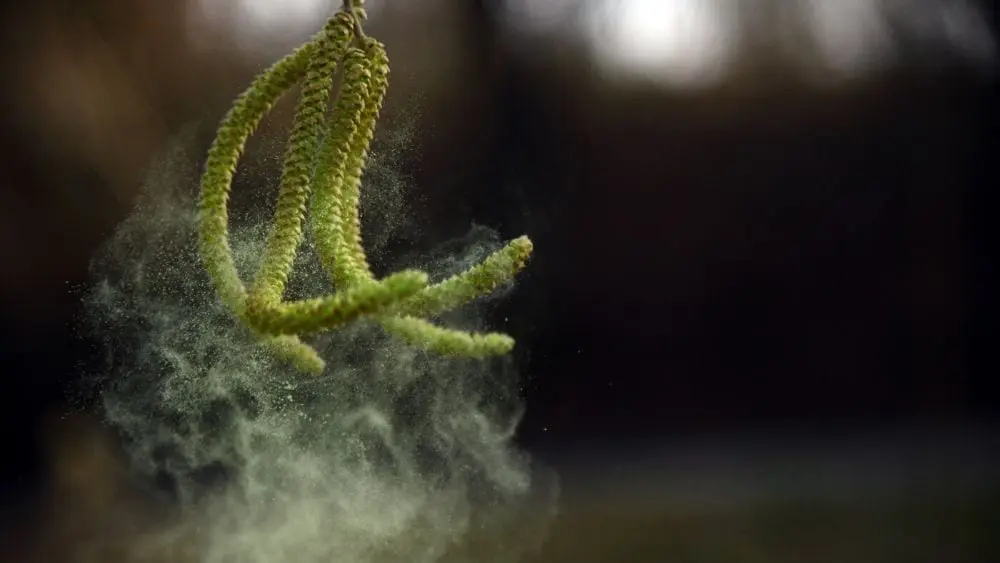
I suffer from debilitating seasonal allergies — you can find me somewhere between coughing up a lung and scratching my eyes out. If you, too, are one of the 40 million Americans suffering from indoor/outdoor allergies, then you know how critical geography can be for your wellbeing.
So what cities should you avoid if you’re an allergy sufferer? New Home Source has the scoop.
Each year, the Asthma and Allergy Foundation of America (AAFA) releases a spring and fall report on the Most Challenging Places to Live with Allergies. Their reports take into account daily pollen measurements in a given city, the amount of allergy medication patients in that city use and the amount of allergists per 10,000 patients. While weather and other forces can temper allergies year to year, most allergy-prone cities remain in their relative positions over time.
Combining the results of the AAFA’s 2014 Fall Study and 2015 Spring Study, these are the cities with the hardest-hitting, year-round allergies ranked below from bad to worse.
10. Chattanooga, TN
On a scale of 100 (with 100 being the worst), Chattanooga landed a spring score of 83.91 and a fall score of 86.18. Not a force to be reckoned with, Chattanooga’s allergy sufferers use more medication than the average allergy patient; but, they enjoy a better-than-average allergist-to-patient ratio. Pollen levels fluctuate throughout the year and include varieties of trees, weeds and grasses including mulberry, hickory, oak, ragweed and Bermuda grass.
9. Baton Rouge, LA
Louisiana’s capital has got it bad when it comes to allergies. Subject to hickory, oak and ash tree pollens, ragweed and amaranth varieties and a handful of grasses, Baton Rouge pulls in at a hefty 84.30 for spring 2015 and 88.56 for the fall of 2014. Suffering from a worse-than-average daily pollen count and higher-than-average medication usage, Baton Rouge sits comfortably at an average allergist-to-patient ratio.
8. Knoxville, TN
Just two hours away from its allergy-ridden neighbor, Chattanooga, Knoxville weighs in high on the spring scales with a score of 94.51 and slightly lower score for the fall at 79.15. Pollens from oak, hickory and mulberry trees are prominent in the spring, while a substantial list of weeds including ragweed, wormwood, amaranth and pellitory are the primary fall culprits. Grass pollens are also present year round.
7. Dayton, OH
Dayton weighs in higher in the fall than in the spring, with 91.56 and an 86.15 respectively. Oak and ash pollens run rampant across Dayton in the springtime and, while there are no tree pollens stirring in the fall, a host of weeds and grasses, including corn, get the best of Daytonites during the chilly season. Dayton is plagued by worse-than-average pollen counts, higher-than-average usage of allergy medication and an average allergist-to-patient ratio.
6. McAllen, TX
Right at the southernmost tip of Texas, McAllen is nestled in the Rio Grande Valley, just a stone’s throw away from Mexico. Primarily plagued by willow and ragweed pollens, there is an almost-steady supply of Mexican ash and Bermuda grass pollens floating around as well. McAllen pulls in at an 89.56 spring score and a 91.56 fall score. McAllen scores worse than average across the board for pollen count, medication usage and allergist-to-patient ratio.
5. Wichita, KS
Significantly worse in the fall than spring, with 95.76 and an 86.43 scores respectively, Wichita has a wide array of tree pollens ranging from walnut to willow, maple to oak and cedar to ash. A high number of weed pollens are present in the fall and grass pollens remain fairly stable year round. Wichita’s allergist-to-patient ratio sits at a comfortable average, while their medication usage is high, as are their daily pollen counts.
4. Memphis, TN
Residents of Memphis suffer from a long list of yearly allergens. The spring allergy season is arguably the worst (scoring a 94.64 AAFA rating for Spring 2015) with close to 40 different types of tree pollens, eight weed pollens and eight grass pollens coming together to create a terrible sneeze fest. However, the fall season is still nothing to scoff at, with a score of 88.56. While there are far less tree pollens in the fall, the number of weed pollens increases, while grasses stay relatively stable.
3. Jackson, MI
Jackson pulls off a staggering AAFA score of 100 for spring 2015. Common spring pollen types include oak, juniper and sycamore. With a fall score of 86.95, Jackson’s worse-than-average daily pollen counts and higher-than-average medication usage by allergy sufferers denote the struggles of this chronic disease. Jackson’s allergist-to-patient ratio hangs around the average mark of 0.91 board-certified allergists per 10,000 estimated patients.
2. Oklahoma City, OK
Prone to oak, birch and maple, Oklahoma City has both a heavy spring and fall season, scoring a 95.64 and a 92.00 respectively. With exceedingly high pollen counts and above-average medication usage, Oklahoma City is more foe than friend, despite its nickname as the Big Friendly. However, higher-than-average allergist-to-patient ratio suggests that care is accessible in the area.
1. Louisville, KY
And now, the big winner (err, loser) of the worst city for allergies; presenting Louisville, Kentucky.
Like Jackson, Miss., Louisville managed to pull off a staggering score of 100 in the fall of 2014. Its numbers for spring weren’t far behind though at 98.34. A substantial number of trees shed their pollens in spring, including walnut, willow, oak, ash, maple, cedar and pecan. A steady supply of weeds and grasses also give off pollens for most of the year. While Louisville’s daily pollen counts are worse-than-average at above 300 grain per cubic meter of air — and their medication usage was more than 1.15 medications per allergy patients — they maintain a better-than-average allergist-to-patient ratio than other allergy-high cities.
 How to Buy a Multigenerational Home
How to Buy a Multigenerational Home